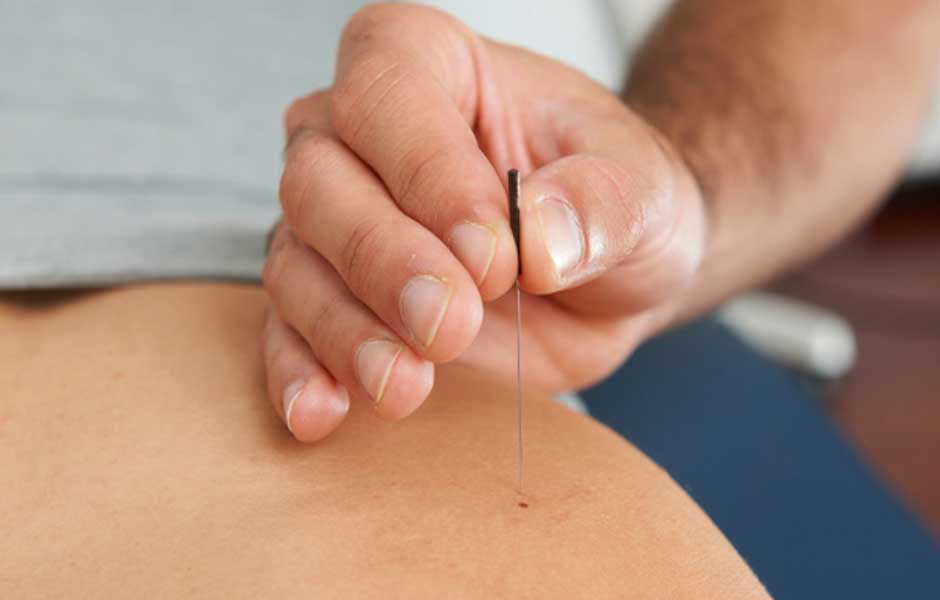Dry needling (DN) has been used as a treatment technique by many physiotherapists for over 15 years now. Not to be confused with Traditional Chinese Acupuncture (TCA) which is based on a completely separate philosophy, it does however share the same solid filament needles of varying lengths, as well as some of the same insertion methods.
DN differs from TCA in that it is based on Western anatomical and neurophysiological principles, focusing on active myofascial trigger points rather than different energy systems. It is a very useful adjunct to other physiotherapy modalities.
The evidence base for DN in physiotherapy has increased significantly in the past 10 years. There is now solid research supporting its use in acute and chronic back pain, neck pain, headaches, pelvic girdle pain, knee osteoarthritis, lateral elbow pain and a variety of shoulder conditions. Up to 85% of chronic pain cases will involve underlying myofascial trigger points. This was first substantiated by Dr Travell and Dr Simons in 1983.
So what does it do?
Something causes pain. If it happens repeatedly or if the trauma is great enough then a Reflex Arc is activated via feedback to the spinal cord.
This causes pain to increase instead of fade, and muscle spasm to activate and persist.
Introducing a new stimulus (the needle) can impede the Reflex Arc and have the effects of reducing pain and decreasing muscle spasm.
By causing the muscle to relax, (as has been proven by EMG studies on dry needling) blood flow to the area is improved, helping flush out debris and inflammation, as well as improving oxygen and nutrient supply.
What does it feel like?
The most common response we have to DN is the comment “is that it?!” As a rule, the needle insertion is barely felt, while a local muscle twitch response may provoke a very brief pain response in some cases. During treatment, the person may feel a heaviness or a pleasant feeling of relaxation. Only sterile, single use acupuncture needles are used ensuring safety and no infection.
After DN, it is best to gently stretch the affected muscles regularly for the rest of the day, as well as drink plenty of water. The only side effects we have had reported are a localized soreness around the insertion site(s) lasting a few hours or occasionally a feeling of light headedness immediately on arising from a treatment.
Where does this fit in with an overall treatment program?
DN is most commonly used early in the treatment of an acute injury or acute muscle spasm to alleviate pain and encourage local muscular relaxation. It has also been proven effective being used over a longer term with chronic pain situations.
– Ingrid Takis Physiotherapists
Tel : 011 4637528
Mobile : 0827714515
EMAIL : ingridphysio@mweb.co.za



